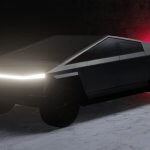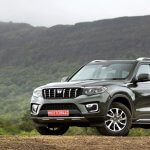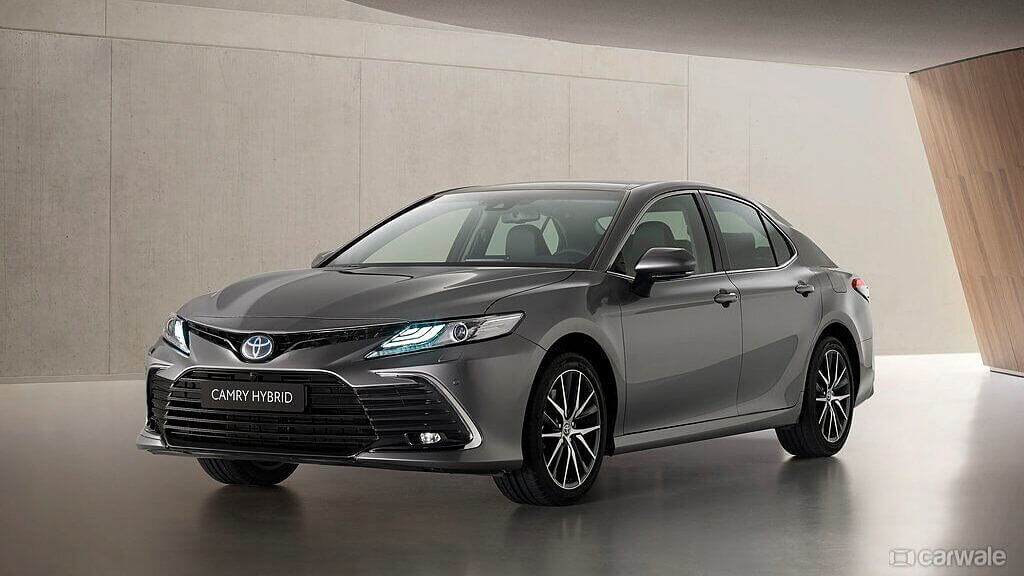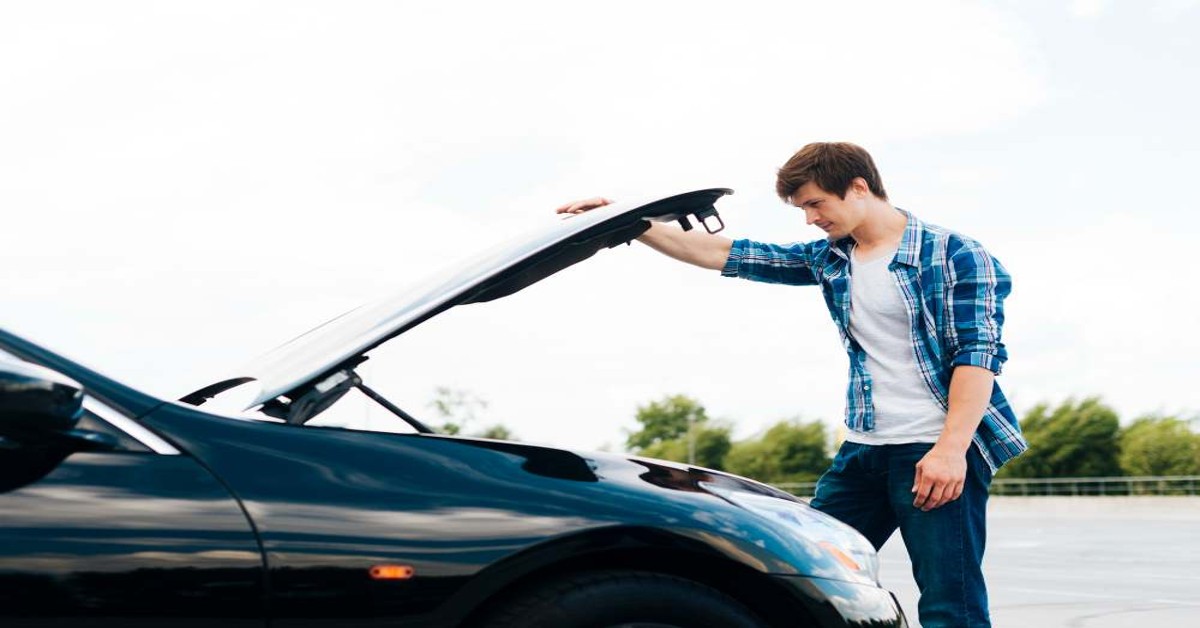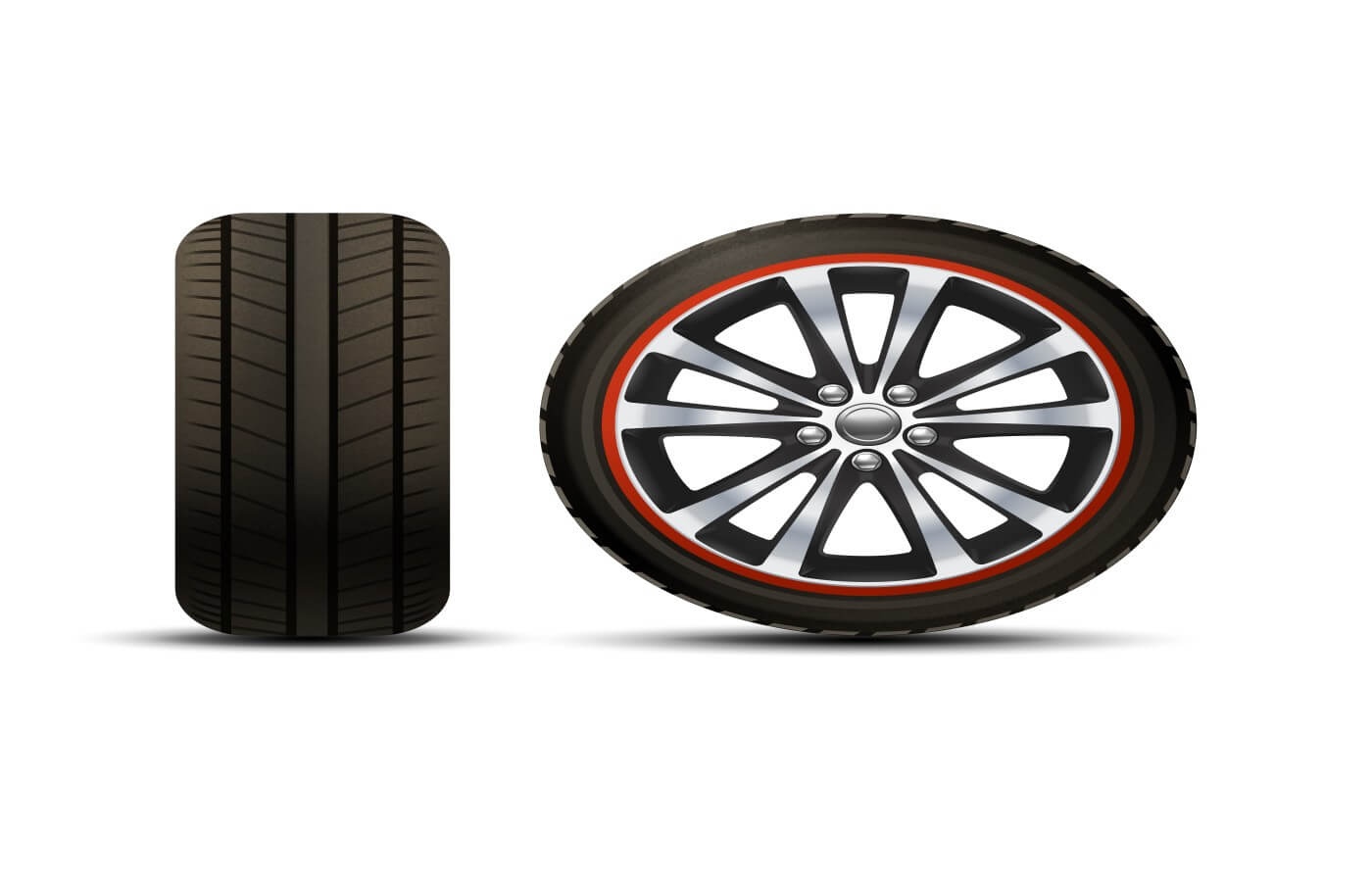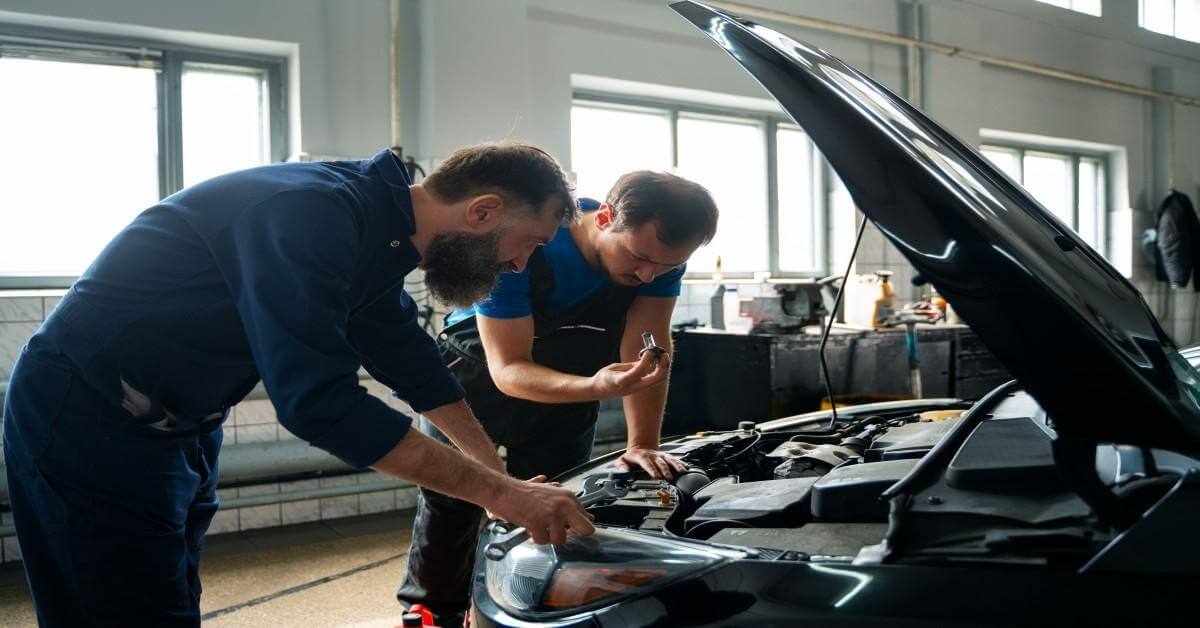A system that automatically manages the speed of a vehicle is known as cruise control (also known as speed control, cruise command, auto cruise, or tempo map).
The system is a servomechanism that takes control of the car’s throttle to keep it at a constant speed chosen by the driver.
It would be exhausting to maintain pressing the accelerator pedal for a lengthy period of time when driving on a highway. Cruise control is a tool that helps drivers who are driving long distances feel less tired.
The technology is designed to mimic how human drivers use their vehicles. However, instead of pushing the accelerator pedal, it controls the throttle using an actuator, allowing your automobile to maintain the same speed.
Table of Contents
WORKING
To adjust the cruise control to the present speed, the driver must physically accelerate the car.
A revolving driveshaft, speedometer cable, wheel speed sensor from engine RPM, or internal speed pulses created electrically by the vehicle provide the cruise control with its speed signal.
Most systems disable cruise control below a particular speed, usually about 25 or 30 mph (40 or 48 km/h). If the vehicle is equipped with a ‘drive-by-wire’ system, the car will maintain the correct speed by
employing a solenoid to pull the throttle cable, a vacuum-driven servomechanism, or the vehicle’s electronic systems (completely electronic).
When the driver depresses the brake and, in certain cases, the clutch, all cruise control devices must be capable of being switched off both expressly and automatically.
A memory function for resuming the set speed after braking is common, as is a cost feature for reducing the set speed without braking.
Also read: https://vehiclecare.in/blaze/how-paint-contamination-works/
The throttle can still be used to accelerate the automobile when cruise control is on, but if the foot is removed, the car will slow down until it achieves the previously set speed.
Cruise control can be linked to the vehicle’s engine management system on newer automobiles with electronic throttle control.
Some cruise control systems have a “speed limiter” function that prevents the car from exceeding a pre-set maximum speed; this can typically be overcome by fully depressing the accelerator pedal.
(Most systems will prevent the vehicle from raising engine speed to accelerate above the specified speed, but they will not apply the brakes if the vehicle is overspeeding downhill, nor will they stop the vehicle from traveling faster than the chosen speed with the engine idle.)
Cruise control is less flexible in manual transmission automobiles since depressing the clutch pedal and moving gears frequently disengage the cruise control.
After selecting the next gear and releasing the clutch, the “resume” option must be utilized each time.
The cruise control system on earlier automobiles uses a cable to hold the gas pedal in a specific position in order to maintain the pre-set speed. In recent automobiles, however, the speed is controlled electrically using a program rather than a cable.
Instead, a wireless system manages the function via a computer connected to different sensors and throttle controls. This newer technology may modify the speed based on the speed of the car ahead while keeping a safe distance.
Because drivers do not have to continually push and release the accelerator pedal, it significantly lowers driver fatigue. On highways or roads with traffic bottlenecks during rush hour, drivers will find the system very beneficial.
What is the purpose of cruise control?
Before using cruise control in your automobile, keep in mind that it is not designed to be utilized in bad weather. When it’s pouring severely, for example, you might not want to drive at cruising speeds.
Driving at such speeds is dangerous due to reduced visibility and unexpected road conditions. So, before using the system, always be aware of the weather and your surroundings.
Use cruise control by following these procedures.
Step 1: Accelerate the automobile before enabling cruise control. However, do not exceed that road’s/speed highway limit.
Step 2: Turn on cruise control after your automobile has reached the required speed. The system activation button is commonly found on the steering wheel. To eliminate distractions while driving, it is preferable to locate the correct button while the car is parked.
Step 3: Now let go of the accelerator. The automobile should keep its cruising speed if the cruise control is adjusted appropriately.
Step 4: Keep your eyes on the road since it’s easy to get sidetracked when the car accelerates on its own.
Step 5: To momentarily engage the accelerator pedal while the cruise control is active, push the ‘+’ button on the steering wheel.
Step 6: Press the ‘-‘ button on the steering wheel to decelerate. You may also use your foot to tap the brake pedal. When you hit the brake pedal, practically all automobiles disengage the cruise control as a safety measure.
The cruise control and acceleration/deceleration buttons may differ from car to automobile. So, before messing with the system, read the owner’s handbook.
It is preferable if you are familiar with the controls prior to driving the car since this will eliminate unneeded distractions.
Acceleration and deceleration are controlled by cruise control.
The gas pedal is attached to one cable, while the vacuum actuator is connected to the other.
The cruise control system adjusts the throttle position, exactly as you do. However, instead of pushing a pedal, cruise control operates the throttle valve through a wire attached to an actuator.
By restricting how much air the engine takes in, the throttle valve controls the engine’s power and speed.
One wire originates from the accelerator pedal, while the other originates from the actuator. When you use cruise control,
the actuator moves the cable attached to the pivot, which adjusts the throttle, but it also pulls on the cable connected to the gas pedal, which is why your pedal travels up and down when you use it.
The throttle is operated by an electronically controlled vacuum actuator.
To open and close the throttle, many automobiles employ actuators powered by engine vacuum. The vacuum in a diaphragm is regulated by a tiny, electronically controlled valve in these systems.
This functions similarly to the brake booster, which supplies power to your braking system.
What is the procedure for installing cruise control on a vehicle?
Is cruise control possible to put in a vehicle? Both yes and no are correct. If your automobile is ancient and doesn’t have electronics to manage all of the engine’s operations,
you may add an aftermarket kit. However, due to the complexity of today’s electronics, installing such a kit is nearly difficult.
Installing the system in new automobiles is a difficult task since it entails tinkering with electronics as well as hardware installation. As a result, it can only be done during the automotive production process.
Furthermore, attempting to install an aftermarket kit may violate the OEM’s warranty (Original Equipment Manufacturer). Furthermore, an aftermarket cruise control kit is not suggested since it may jeopardize safety.
Except for a few entry-level models, all newly introduced automobiles come with cruise control. Rather than installing a system, it’s smarter and safer to spend that money on a car with one already installed.
Cruise control that adapts to your needs
The device may also automatically alter the car’s speed based on the speed of the vehicle ahead. Adaptive cruise control is the name of this functionality.
Despite the frequent fluctuation in the speed of the vehicle ahead, it guarantees that the automobile maintains a safe distance from it. It helps minimize driving tiredness on roads and during rush hour.
It’s also a level-one self-driving vehicle. The speed and distance of the automobile ahead are calculated using radar sensors. For example,
if the vehicle in front of you slows down or accelerates, a car with adaptive cruise control will automatically lower speed/accelerate without any external inputs.
This feature is common in high-end vehicles. However, it is progressively making its way down to less-priced vehicles. The sophisticated driver-aid system includes adaptive cruise control.
Cruise control’s advantages and disadvantages
Cruise control makes driving easier and more convenient while also ensuring driver safety. However, it, like every other feature, has its own set of benefits and drawbacks, which are detailed in the following section.
Some of the cruise control system’s advantages are listed below.
- Reduces driver fatigue: Cruise control’s principal function is to maintain a constant pace without the need to press the accelerator pedal.
- That means you may relax and rest your right foot. It comes in very handy when traveling long miles on roads and needs to keep a consistent pace for extended periods of time.
- Improves fuel economy: By keeping a steady speed, the engine is not overworked since the intensity of activity is not changed. Simply said, an engine that operates at consistent RPMs (Revolutions Per Minute) burns less gasoline.
- As a result, while traveling long distances on highways, the cruise control system can help you save money on gas.
- Allows you to travel at a reasonable speed on congested metropolitan roadways. However, as you reach the wide, smooth roadways, you may find yourself exceeding the speed limit.
- You might not even notice you’ve been over the speed limit until you look at the speedometer.
- In this case, cruise control can assist you since you can quickly set a speed restriction and let the system handle the rest. The device will prevent the automobile from exceeding the speed you specify.
- Increase or reduce speed with a push of a button: Normally, you would use the accelerator and brake pedals to change the car’s speed.
As previously said, cruise control has certain drawbacks, which are outlined below.
- Cruise control is best suited for vast and lengthy routes when drivers respect the regulations. Despite the fact that India has several great roadways, many drivers may flout the regulations, creating an uncertain situation.
- Cattle, dogs, and other animals may also wander onto public roadways, complicating the problem further. As a result, cruising at high speeds might be difficult.
- As previously stated, India’s roadways are unpredictable. To avoid any road impediments, you may have to use emergency braking.
- Your right foot will be on the acceleration pedal when driving with manual controls, and it will be easy to relocate your foot to stomp on the brake pedal in an emergency.
- When utilizing cruise control, though, your right foot will be resting on the car’s floor, making it take a little longer to reach the brake pedal.
- This gap in response time might mean the difference between you avoiding or colliding with an impediment.
- Long-term usage of cruise control may cause sleepiness. Your attentiveness level may decrease over time as the automobile accelerates at a steady pace.
- When utilizing the automated cruising mode on highways, it is advised that you operate the car manually once every 10-15 minutes.
- Because vision is limited at night, cruise control is useless. Even on well-lit roadways, visibility is poor. As a result, even on known routes, permitting the automobile to keep a steady pace might be dangerous.
- It does not operate well with manual autos since you must change gears manually in a manual car. The cruise control will manage the acceleration and deceleration, but you’ll still need to swap gears manually to keep the RPM at the right level.
- It might be aggravating when you need to quickly slow down and accelerate. It’s not a deal-breaker, but it prevents you from fully exploiting the automated cruising system’s capabilities.
Vehicles with cruise control are listed below. In India
Cruise control is a function found in many automobiles. This function is no longer exclusive to high-end automobiles. Even automobiles with low sticker prices come with sophisticated features.
The following is a list of popular automobiles that include an automated cruising system.
| Maruti XL6 | Hyundai Alcazar | Volkswagen Polo |
| Maruti Ciaz | Hyundai Creta | Volkswagen Vento |
| Maruti Dzire | Hyundai Venue | Mahindra Thar |
| Maruti S cross | Hyundai Aura | Jeep Compass |
| Maruti Swift | Hyundai i20 | Honda jazz |
| Maruti vitara Brezza | Hyundai Verna | Honda city |





